TREE-SIT STOPS OLD-GROWTH LOGGING PROJECT IN SOUTHERN OREGON
June 7, 2024 by ALISSA AZAR
LCRW is 100% reader-funded!
Support LCRW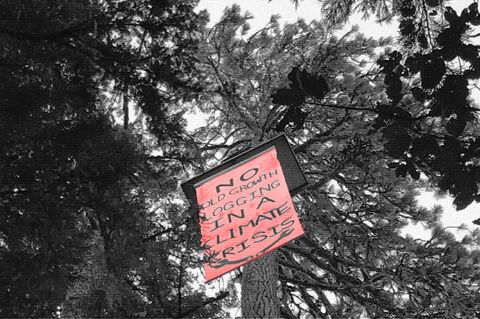
On the morning of April 1st, forest defenders launched a tree-sit to stop the logging and sale of mature and old growth trees. The occupation of the forest in Josephine County, just outside of Wolf Creek in Southern Oregon, continued from April 1st through 23rd on federal Bureau of Land Management (BLM) land. Forest defenders said they were protesting BLM’s Poor Windy project, and, more broadly, their continued practice of logging mature and old growth forests. The Poor Windy project would have log more than 15,000 acres, which includes over 4,500 acres of old growth trees and mature forest that are essential nesting, roosting, and foraging habitat for the threatened northern spotted owl and many other species.
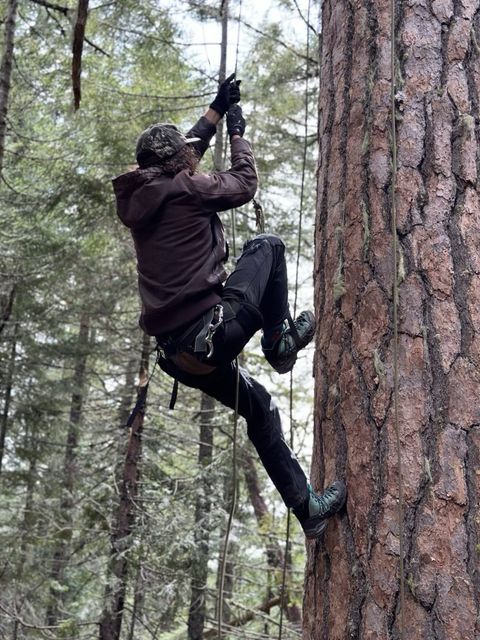
Despite the Biden Administration’s committment to ending the practice of old growth logging on public lands, logging companies found a loophole to target old growth trees. Logging companies have been relying on “road building” tactics in order to retrieve old growth trees that have a high dollar value. The BLM is part of an agreement called the Regional Management Plan (RMP), in which they are restricted from cutting mature and old growth trees–anything older than 150 years and larger than 40 inches in diameter. Despite this, BLM utilizes a road-building loophole that allows them to cut roads that are often parallel to existing roads, cutting large swaths of larger trees in order to have easier access to the rest of the trees that would otherwise be off limits in the sales. This is called “incidental take.” This is an increasingly common tactic used by the BLM and loggers to avoid regulatory oversight. When logging companies have the land they want to log surveyed, protected old growth trees have specific marks as to not be logged. These trees often end up being logged anyways and the companies attribute it to “incidental logging.” Last year in 2023, 25% of the BLM’s timber volume was from “incidental logging” in the same district where the occupation is occurring.
“What we’ve noticed is that roads are often drawn to be cut through some of the largest trees in a unit. We have no proof that this is intentional, but like… weird coincidence!” a defender told LCRW.
The intent of logging in the specific area where the tree sit is is to build two spur roads which would cut directly through areas with some of the biggest old growth around. These planned spur roads are directly parallel to existing logging roads, and activists told LCRW they strongly believe these planned roads are just excuses to log the old growth.
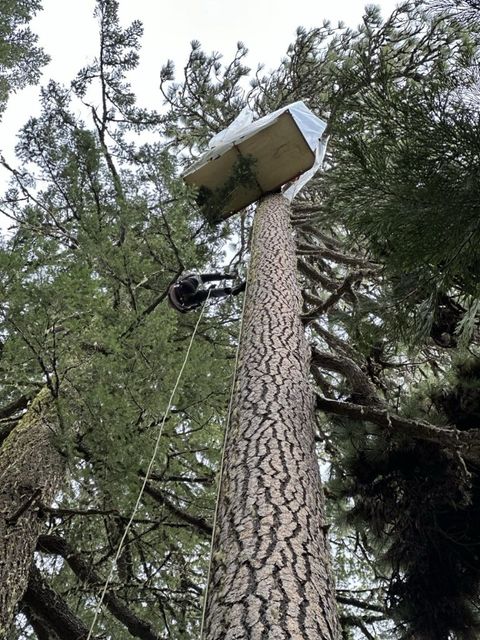
“In 2024, it is unbelievable that federal agencies continue to log irreplaceable, carbon rich, old growth and mature forest that help protect communities from out of control wildfire,” said Solal Golden, one of the organizers and the person participating in the tree-sit. “Protecting these forests is critical not just for our climate, but for our safety.”
Community activists told LCRW that they fear the impacts that logging will have on habitat, wildfire, fresh water, and the climate.
“Something that we have all been talking about a lot is the fire risks that logging like this causes to nearby communities. When areas like this are heavily logged, it’s typically douglas fir monocropping that comes in,” an activist told LCRW. They pointed across the road to an area that had been heavily logged.
“That’s an area that has been heavily logged and is now mostly the same age of douglas firs, that causes all the lower branches to die around the same rate, which is what is known as a ladder fuel which makes the severity of wildfires way more intense,” they explained.`
Research shows that industrial logging also increases wildfire severity and frequency by replacing fire-resilient mature and old growth forests with monocrop timber plantations, increasing threats to rural communities like the one around this sale. In Oregon alone, the BLM is targeting over 1,000 acres of forest for industrial logging. Activists tell LCRW that in doing so, they are essentially giving zero consideration to the rural communities they are affecting, nor the climate. Studies show that Oregon’s forests are some of the most carbon-rich in the world, and that logging is the State’s single largest source of carbon emissions.
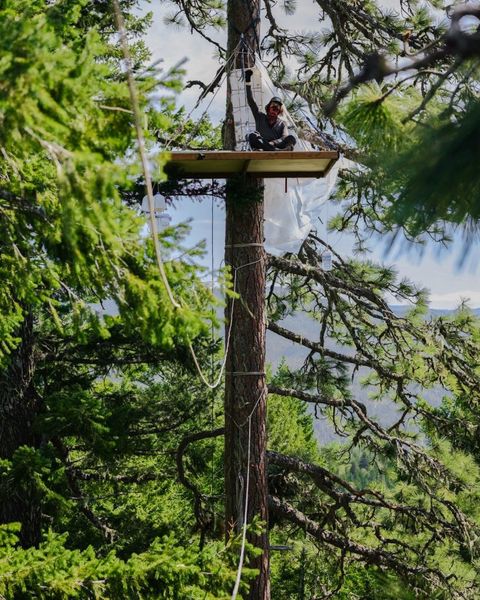
Through the duration of the tree-sit, the local sheriff made an appearance a handful of times, often accompanied by representatives from the logging company, BLM officials, and on one occasion, a health inspector donning a bulletproof vest. Most of the visits involved shock and awe from law enforcement and BLM officials at how high the tree sit was and just generally checking things out and deciding how they wished to proceed with handling the occupation. Forest defenders said they found it telling that the sheriff showed up with the representative of the logging company who bought this timber sale. Defenders said they intend on occupying the space for as long as it takes. The timber company, Boise Cascade, is an out of state company.
“It’s not even local Oregon workers who are benefiting from the sale of this timber, it’s bigwigs who don’t live here and aren’t invested in this rural area at all,” a defender told LCRW.
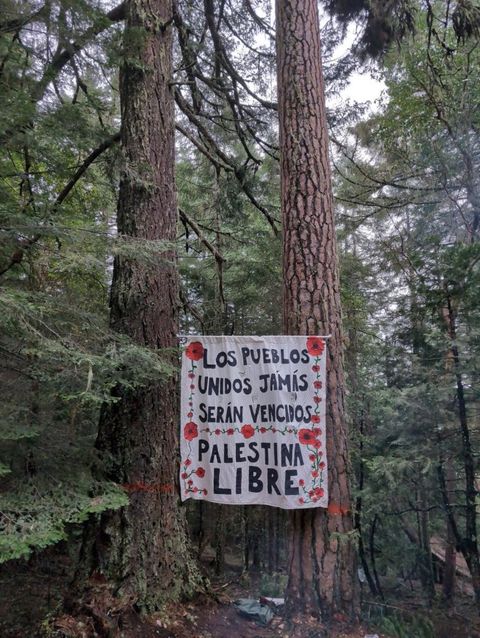
After spending six days camping with forest defenders, LCRW returned to Southern Oregon to chat with activists about their experience. A defender who goes by RatDaddy told LCRW that while the main goal for people occupying the forest is to stop the logging of old growth and stop the roads from being built, defenders are doing even more in the space and building community.
“A lot of things have been going on here,” RatDaddy said, continuing, “We built the tree sit and hauled it up, we set up a traverse line, we make fires and spend time together around the fires talking and learning from people’s past experiences. We go for family walks, make food for each other. We take care of each other here. We’re occupying this space in a really beautiful and special way.”
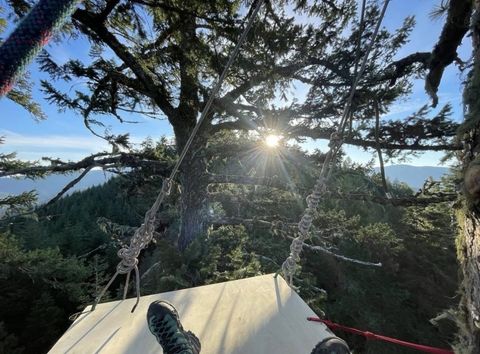
The tree that was occupied is a large ponderosa pine that is estimated to be over 300 years old, which forest defenders have named Princess Poor Wendy. The tree sit itself is roughly 130 feet high up and is connected via a traverse line to another tree across from it, named Peter Pansexual. Princess Poor Wendy stands directly at the head of the anticipated logging road. The surrounding area is filled with a diverse range, both in age and species of trees; it contains plenty of large old growth trees including numerous trees that are several hundred year old ponderosa pines, douglas firs, and cedar trees.
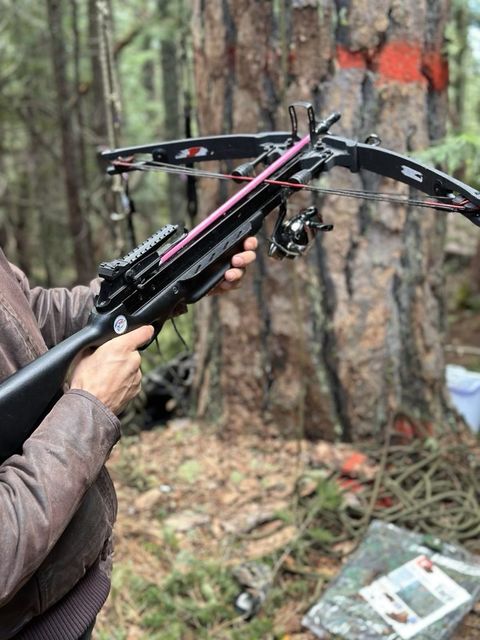
“This tree sit is informed by decades of rich forest defense history in Southern Oregon and across the region,” said Golden.
Oregon has a long history of logging, but it also has a long history of resistance—battles between federal agencies, logging companies, and radical activists led to reduced logging operations all across the Pacific Northwest.
“Something exciting about being out here is the legacy of forest defense in this area. This is where some of the first Earth First! blockades have happened,” a defender told LCRW.
“We’re excited about how many community members have been coming out and sharing some of these tactics of direct action and helping to empower people to take control of what happens on the land near to them.”
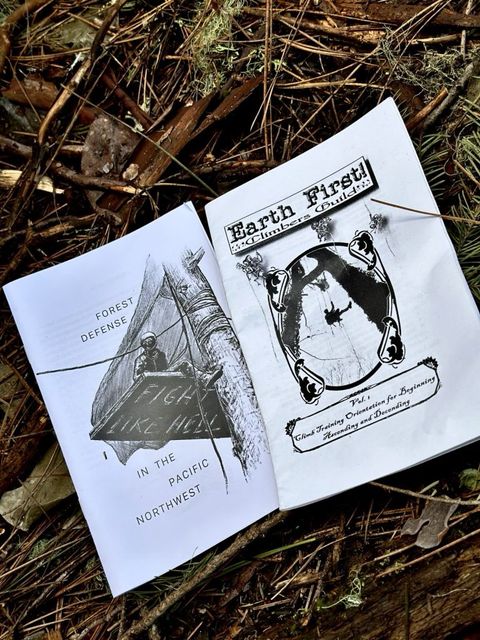
Earth First! activists participated in direct action by occupying trees and forests, destroying equipment, blocking logging roads, and direct confrontations with loggers. The Poor Windy occupation is the first in the county since Earth First! activists took action against the Biscuit timber sale in 2004. Warranted or not, association with Earth First! and its tactics brings baggage with it.
Earth First’s controversial ‘no compromise’ approach, which included tree spiking, arson, economic sabotage and other forms of property destruction got them labeled as “eco-terrorists” in Congress and by federal law enforcement. Between 1987 and 1989, a series of undercover investigations by the FBI known as Operation THERMCON infiltrated an Arizona cell of Earth First! in order to disrupt the group and brand Earth First! as eco-terrorists. Later in 2001, the FBI branded more radical groups such as Earth Liberation Front and Animal Liberation Front as the number one domestic terrorist threat to the United States.
“When you’re in a place so steeped in movement history, we can be inspired by those folks who’ve come before us, and hopefully learn from their mistakes as well. We don’t have to do things the same way as Earth First! in the 1980s – we’re keeping that no compromise attitude while building a new network of resistance,” Golden said.
Forest defenders proceeded to tell me that people will always have something to criticize, so the best thing to do to get started and take action is to just try things out.
“I think it’s important for people to feel that things are possible, because they are,” Golden said. “Talk to people about it, learn their skills, start building those relationships. Everyone has something to offer.”
Following three weeks of direct action, the Bureau of Land Management and Boise Cascade were forced to concede and meet the demands of forest defenders. They amended the contract for the Salmon Run timber sale to remove the contested new spur road. “Princess Poor Wendy” now sits in peace in her natural habitat.
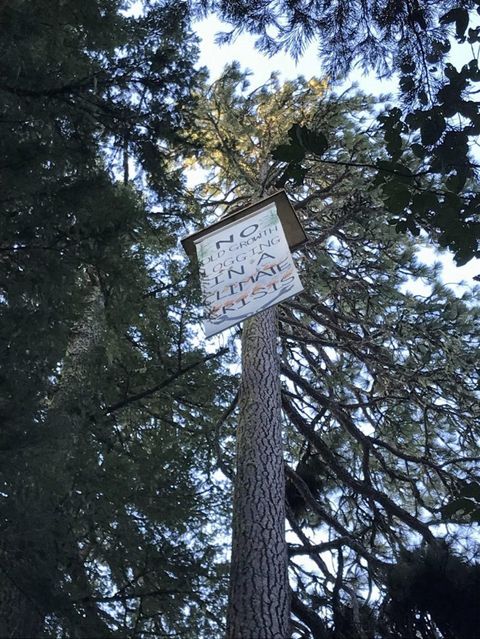
On the morning of June 4th, following the success of the Princess Poor Wendy occupation, tree sitters launched a second occupation to stop the Bureau of Land Management’s “Rogue Gold” timber sale, which targets some of the last remaining old growth and mature forests in Southern Oregon for commercial logging.
“The protest comes just a few weeks after a successful protest against the agency’s nearby Poor Windy Timber Sale, where activists won a concession preserving a swath of old growth trees after close to a month of tree sitting,” forest defenders said in a statement, adding, “Last month’s success only goes to show that direct action works, and these brave forest defenders are committed to continuing to fight tooth and nail until these trees are protected.”
Activists set up the tree-sit occupation near the communities of Rogue River and Gold Hill. The sale is just one of many contentious logging projects that the BLM proposed in Oregon in recent years. Currently, the agency has over 700,000 acres of forest land across the state proposed for clear-cutting. The Rogue Gold sale targets over 2,000 acres for commercial logging, which includes significant amounts of old growth and mature forests. Community groups and environmental organizations have been publicly opposing this project since it was originally proposed in 2021, with logging moving forward despite active litigation.
When asked about the future of forest defense in the Pacific Northwest, activists said that “the fight is far from over.”

